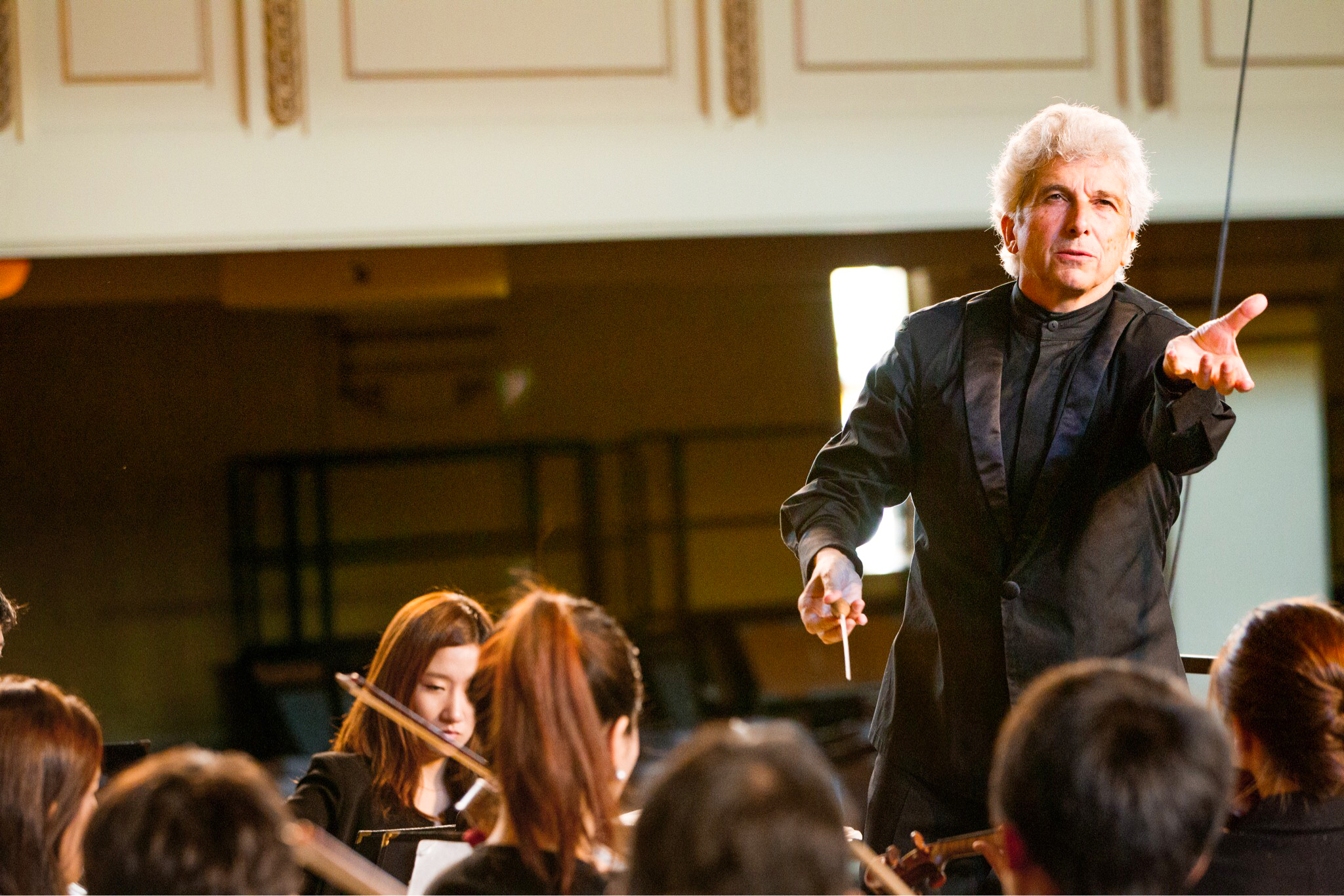
On a Sunday morning in January of 1905, several thousand working class Russians approached the Winter Palace Square in St. Petersburg. They hoped to peacefully petition poor working conditions and economic hardship. Yet, when the Russian police called on the crowd to disperse, confusion followed, and Russian troops opened fire on the crowd. As a bloody massacre ensued, over 1,000 innocent civilians — including women and children — were killed.
This Friday at 7:30 p.m., audience members can experience a musical interpretation of these events in Woolsey Hall, as principal conductor Peter Oundjian leads the Yale Philharmonia in a performance of 20th-century Russian composer Dmitri Shostakovich’s Symphony No. 11, subtitled “The Year 1905.” The orchestra will also perform Ludwig van Beethoven’s Symphony No. 1 in C Major — a symphony that greatly contrasts with the Shostakovich.
“[The Shostakovich is] one of the most staggeringly dramatic pieces ever written,” Oundjian said. “It’s beyond a symphony really — it reenacts an event that took place.”
In response to what Oundjian described as a “hugely tragic and symbolic event in Russian history,” Shostakovich wrote this symphony as a 50-year memorium of the events of January 1905. While the piece’s subtitle mentions the Russian Revolution of 1905, Shostakovich’s work makes a more direct reference to the Soviet Union’s invasion of Hungary and subsequent uprisings.
“The whole concept of the symphony was to allow composers to create a narrative, set up a subject and a contrasting character,” Oundjian said. “Shostakovich, of course, had to be very careful about the statements he made politically. The government watched what composers did in these days. Even Stalin was aware of what composers were writing.”
Each of the symphony’s four movements helps to provide a vivid image of the events in January 1905, also known as “Bloody Sunday.” The ominously quiet opening of the first movement captures the protesters gradually moving towards the palace, expressed through interwoven Russian folk songs.
According to Oundjian, the second movement symbolizes “the movement of the people and the anxiety of the people.” The sound of gunshots — played by the snare drum — fires out of the stillness. A rapid overlapping motif in the strings embodies the panic and hysteria that arose in the crowd once events turned violent.
The third movement, titled “Eternal Memory,” is a funeral march. Shostakovich closes the symphony with alarm-like bells, representing a stance in defiance and anticipation of the following Russian Revolution of 1917.
“You feel this panic — it’s an incredible depiction of human experience,” said Oundjian. “[The final movement] represents essentially human defiance and that ultimately, mankind will win over tyranny.”
Oundjian said that the rehearsal process comprised two elements: the “musical side,” in which the orchestra worked to cover the technical and musical aspects of the piece and the “theatrical side,” which Oundjian said involved aspects similar to a theatre director’s preparation of a play.
“[The orchestra must] truly understand the character and become the character. If we don’t have that kind of conviction, we’re not believable,” he said. “When you’re playing that snare drum, you’re shooting at the crowd. We know what that represents, there’s a different energy in that … it has to be foul, grotesque.”
Percussionist Russell Fisher MUS ’20 noted his section’s role in communicating the narrative Shostakovich had in mind. He said that “the depiction of these events falls heavily on the percussion section.” He added that the “visceral nature of the percussion parts, especially the snare drum part, really get[s] about as close as one can to evoking the truly horrific and overwhelming nature of these events.”
Violinist Ariel Horowitz MUS ’19 highlighted the vast contrast between the Shostakovich and the Beethoven, noting that “the two symphonies … could not be more different from one another.” She described the Beethoven as “gentle and humorous” — characteristics that sharply oppose the “brutal and chilling” Shostakovich.
Oundjian also noted the difference between the two symphonies on Friday’s program. He said that the Beethoven is “much more immediate and specific.”
“It’s amazing to track the progression of the symphonic form through this concert — both works are rewarding to learn and hopefully will be enjoyable for the audience,” said Horowitz.
The Philharmonia’s next performance will take place on Feb. 22 in Sprague Hall.
Allison Park | allison.park@yale.edu







